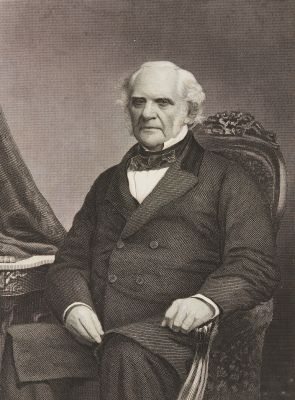
Title
HerschelArtist
Maull & Co. (British, 1866-1869 active)Publication
Portrait Gallery of Eminent Men and WomenDate
1872Process
Engraving (from photograph)Image Size
19 x 14 cmSheet Size
27 x 20 cm
The English polymath Sir John Herschel achieved eminence in the fields of science and mathematics in addition to making important contributions to early photography, which included his coining the words “photography,” “negative and positive,” and “snapshot.” Aside from the fixer “hypo,” Herschel’s major commercial contribution to the medium was the invention of the cyanotype (or blueprint) process. The pioneering Anna Atkins was to use this process to produce her 1843-1853 survey Photographs of British Algae, the first-ever publication with photographic illustrations. Although he never seriously made photographs himself, the example of Herschel’s friendship and ongoing dialogue with William Henry Fox Talbot, the inventor of photography on paper, and other scientific innovators of the time, is representative of how the free exchange of information and discoveries among what was chiefly a group of friends and amateurs was a frequent catalyst of advances in many fields. [1]
This portrait is from the collection of ‘highly finished steel engravings’ included in the two volume series, Portrait Gallery of Eminent Men and Women (1872-1873). The well crafted engravings are after photographic portraits of the subjects by noted photographers such as William Downey, Napoleon Sarony, John Mayall, Antoine Claudet, Maull & Polyblank.
The London commercial photographers Maull & Polyblank founded in 1854 by Henry Maull & George Henry Polyblank had studios on Gracechurch Street and on Piccadilly. Like most London studios in the era before the carte-de-visite, Maull & Polyblank specialized in large-format portraits. Their most notable body of work, Photographic Portraits of Living Celebrities, published from 1856 to 1859, included forty individual portraits with accompanying biographies, issued to subscribers over a period of forty-one months and eventually bound in a single volume, a practice popular in the 1850s and 1860s. The firm continued under this name until 1866 after which it became known as Maull & Co and, after 1879, Maull & Fox.
References
[1] Hans Kraus











